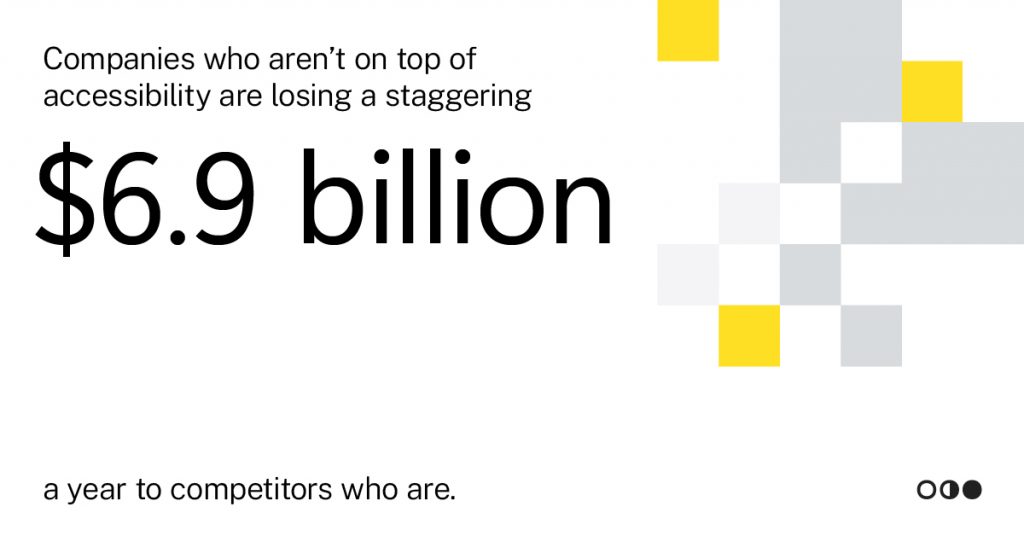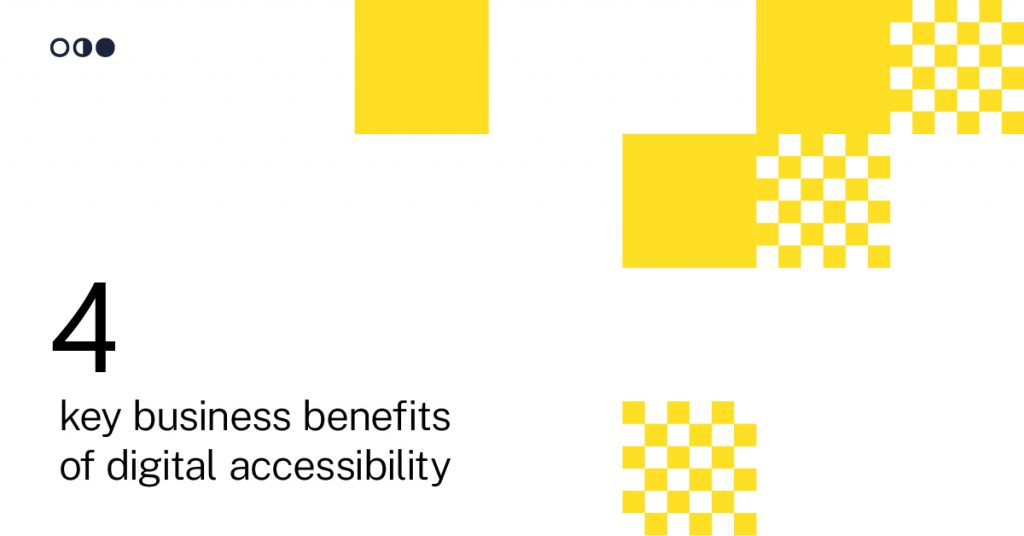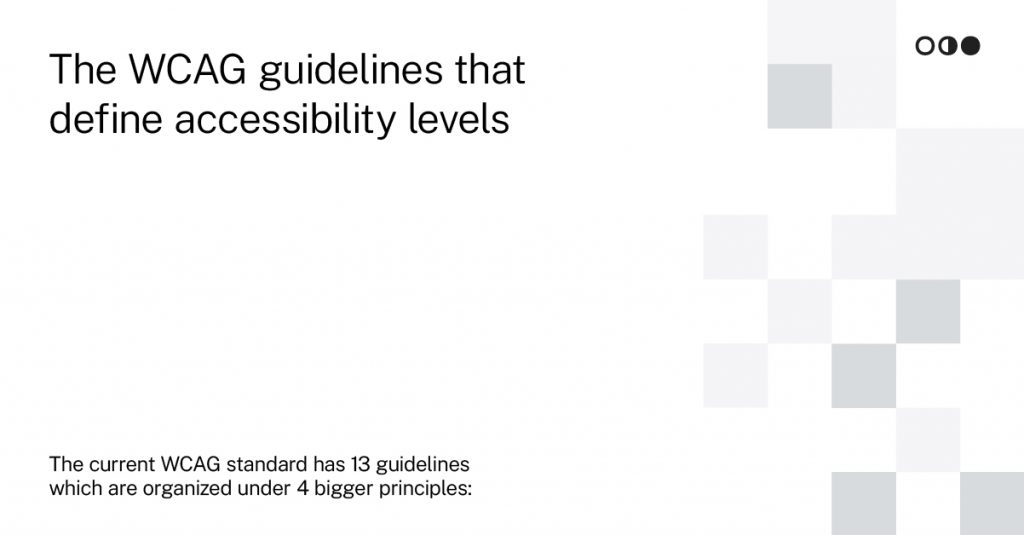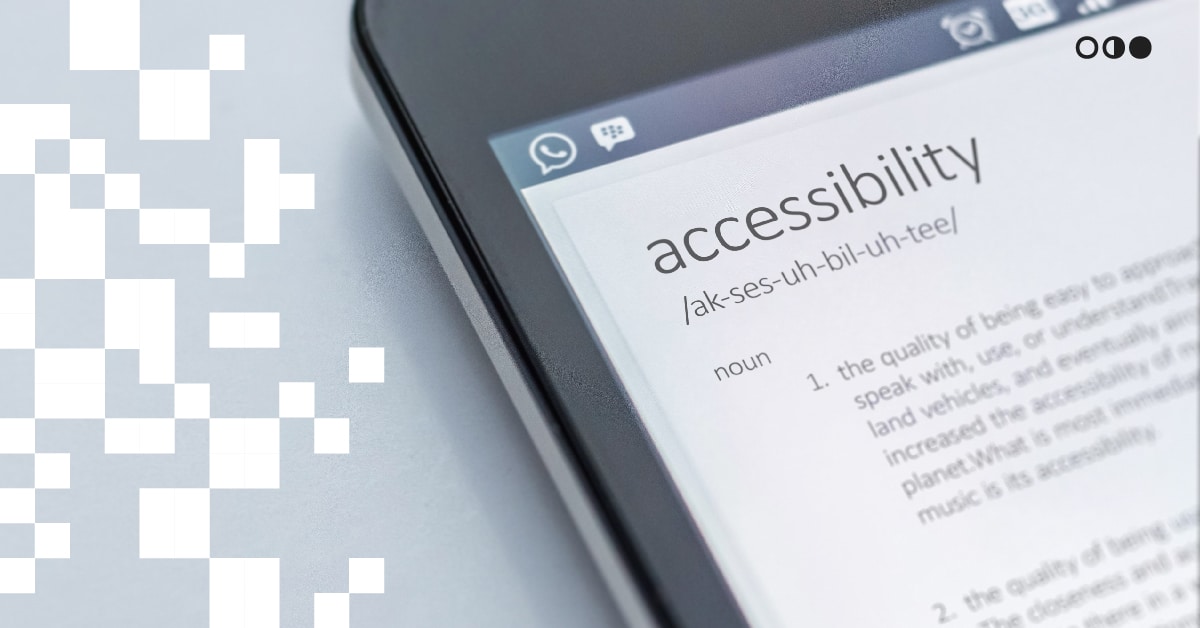The power of digital accessibility: Enhancing user experience and engagement
In today’s digital age, technology has become an integral part of our lives, transforming the way we work, communicate, and navigate the world around us. It has the power to bridge gaps, connect people, and revolutionize industries.
However, amidst this lightning-speed progress, it’s incredibly important to remember that not everyone experiences technology in the same way.
Accessibility has emerged as a fundamental aspect of software development, aiming to ensure that digital experiences are inclusive and usable by individuals of all abilities. And it goes beyond mere compliance with regulations! At its best, accessibility is all about enabling everyone, regardless of their physical or cognitive differences, to access and interact with technology effortlessly. And while intentions are good, it’s still a hard nut to crack for a lot of businesses, even in 2023!
At Mooncascade, we believe that accessibility is not an afterthought but an inherent principle that should drive the entire software development process.
With this in mind, we’ll explore the following in this article:
- Common accessibility misconceptions (oh yes, it’s mythbusting time)
- The business benefits of accessibility
- The European Accessibility Act of 2025 and its impact on businesses
- How you can prepare your business for 2025 and onward
- How to navigate the challenges towards creating inclusive digital experiences
- Choosing the right development partner
Let’s go!
Debunking common misconceptions about accessibility
First, let’s get on the same page about what accessibility actually is, specifically in the realm of software development:
Accessibility is the practice of designing and developing software applications or systems that can be used by individuals with disabilities or impairments. It ensures that people with diverse abilities, including those with visual, hearing, mobility, or cognitive impairments, can access and use software products effectively.
Accessibility is a very real thing in the everyday lives of over 1.3 billion people in the world. And yes, that’s quite a big number, but what if we told you that essentially translates to 1 in 6 people having a disability? And with more and more people consuming content online and using digital services every day, it can have a huge impact on digitally-driven businesses. Just last year, the World Health Organization (WHO) estimated that companies that aren’t on top of accessibility are losing a staggering $6.9 billion a year to competitors who are.

And here’s the real kicker: Contrary to popular belief, accessibility benefits not only individuals with disabilities but also a wide range of users, including those with temporary impairments, older adults, and individuals using different devices or environments.
Features such as captioning, alternative text for images, and clear navigation can be useful for users with minor disabilities, and even improve the user experience for people without disabilities. By incorporating these features, businesses can ensure that their digital experiences are inclusive and accessible to a broader audience.
Another common myth about accessibility is that it’s expensive and time-consuming. However, the reality is that while implementing accessibility features may require some investment, many accessibility practices can be integrated at minimal or no cost.
And let’s face it: It’s more cost-effective to consider accessibility from the beginning of a project rather than retrofitting later. By debunking these myths, we can promote a more inclusive understanding of accessibility, ensuring equal opportunities and experiences for everyone.
The business benefits of digital accessibility
These days, prioritizing digital accessibility isn’t just a social responsibility: it’s a strategic business move with quite a few note-worthy benefits and advantages that can directly impact your bottom line.

| Expand your customer base | Enhance the user experience in your product |
| Build a strong(er) brand image | Ensure legal compliance |
Expand your customer base
Implementing digital accessibility opens up new opportunities to connect with a larger customer base, from users with disabilities to users who appreciate the added options in your product. By ensuring that people of all abilities can access and effectively use your software, you can attract a diverse range of customers and increase sales (which of course translates into improved revenue and sustainable growth, and who doesn’t like the sound of that?).
Enhance the user experience in your product
Designing software with accessibility in mind not only benefits individuals with disabilities but also enhances the experience for all users. It creates intuitive, user-friendly interfaces, leading to higher customer satisfaction, increased engagement, and positive word-of-mouth recommendations. Taking on accessibility challenges also fosters a culture of innovation and creativity at your company, keeping you ahead of the competition (and making you an attractive workplace for future talent!).
Build a strong(er) brand image
Demonstrating a commitment to accessibility sends a powerful message about your organization’s values and inclusivity. By prioritizing accessibility, you can position your business as socially responsible. And, in markets where accessibility is not yet widespread, offering accessible software sets you apart from competitors (this is where we remind you once again of the companies who lose out on $6.9 billion a year to companies who have their accessibility in order).
Ensure legal compliance
Accessibility requirements are becoming increasingly mandatory by laws and regulations on every level. Integrating accessibility into your software development process helps you navigate the murky waters of legal challenges and potential penalties for non-compliance. This proactive approach not only safeguards your business reputation but can also help you avoid costly legal battles (especially in some markets and countries).
Clearly, businesses can unlock a world of opportunities once they recognize the power of digital accessibility. It may take some work in the beginning, but overall it’s a smart investment that will pay off in the long run.
The European Accessibility Act of 2025
In 2025, the European Accessibility Act (EAA) will come into effect, requiring all new products and services within banking, FinTech, and other markets to be accessible at an AA level.
What does that mean? It means that all products and services have to hit a certain standard of accessibility. A level is considered the minimum level, AA level is considered legally acceptable, and AAA level is the highest and most optimal accessibility level.
These accessibility levels are defined and ranked by the World Wide Web Consortium (W3C) in their Web Content Accessibility Guidelines (WCAG). All guidelines are internationally recognized, and they provide a framework as well as specific recommendations to make web content more accessible.

| Perceivable All information and UI components can be seen and heard by all users and senses (e.g. through images, captions, screen readers, etc.) without losing any of the meaning and context of the content. | Operable All tasks can be done with a keyboard instead of a mouse, all UI components and navigation can be accessed by all users, and no information flashes or flickets (heightened risk of seizures). |
| Understandable All information and UI components are understandable by all users through readable text, predictable content components, clear instructions, and error prevention mechanisms. | Robust All content is robust and compatible with different browsers and assistive technologies, and all users can access all content (e.g. proper use of markup languages, interoperability with various devices and platforms, etc.). |
The WCAG Guidelines that define accessibility levels. Check out their full guidelines here.
Each of the above guidelines has a number of success criteria that tells you how accessible a service or product is. There are a total of 78 success criteria, divided over three levels of accessibility: level A (you’ve met 25 success criteria), level AA (you’ve met 38 success criteria), and level AAA (you’ve met all 78 success criteria).
And even though 2025 may seem far away, it’s important to already consider how you can audit and prep your business for level AA today. Properly incorporating accessibility into your new products will take time, and you’ll want to get it right the first time so you don’t have to do it over.
Get your business ready for 2025 (and onward!)
Still with us? Great! (We know, it’s a lot to take in!). And although it’s not 2025 yet, it’s never too early to start preparing for accessibility compliance.
Thankfully there are ten steps you can take to make the transition smoother:
- Get familiar with EAA: Get an understanding of how relevant EAA obligations and implications are to your organization or sector, what the key aspects of the act are, and how they may impact your products or services. You can find more info on the EAA Q&A page.
- Talk to accessibility experts: These professionals have specialized knowledge and can give you support in conducting audits, making recommendations, and delivering tailored training to meet your organization’s needs.
- Adopt WCAG as a reference: Familiarize yourself with the Web Content Accessibility Guidelines (WCAG) 2.1 (a new version will drop by the end of October 2023). Make it your accessibility reference and keep its guidelines in mind throughout the development of new products and features.
- Implement accessibility policies and procedures: Develop or update your organization’s accessibility policies, procedures, and guidelines to align with the requirements of the EAA and WCAG (outline your commitment to accessibility and how you integrate it into your processes and workflows).
- Update procurement and vendor contracts: Review and update your external vendor procurement policies and contracts to include accessibility requirements. Ensure that your vendors adhere to accessibility standards and provide accessible products and services.
- Train your team: Provide accessibility training to your employees, especially those involved in UX, design, development, content creation, and customer service. Training should cover accessibility best practices, WCAG guidelines, and techniques for creating accessible products and services.
- Conduct an accessibility audit: Assess the current accessibility status of your products, services, and digital content. Conduct an accessibility audit to identify any barriers or gaps that need to be addressed (this will uncover the areas that require improvement to meet the EAA standards).
- Plan for Implementation: Develop an implementation plan that outlines the steps, timeline, and resources needed to achieve compliance with the EAA. Prioritize accessibility improvements based on their impact and feasibility.
- Involve users with disabilities: Engage with users with disabilities throughout the development and testing processes. Seek their feedback and insights to identify barriers and improve the overall accessibility of your offerings.
- Monitor legal and regulatory updates: Stay proactive and informed about any updates or changes to accessibility laws and regulations in the EU, as the EAA may be supplemented by additional guidelines or national legislation (and directly impact your compliance efforts).

Challenges and pitfalls to avoid
While preparing for accessibility, you’ll likely encounter various challenges. Here are some common ones and how to address them:
- Complexity of accessibility guidelines: Accessibility guidelines such as WCAG can be complex and technical. Don’t hesitate to seek assistance from accessibility professionals to ensure correct interpretation and implementation.
- Evolving technologies and platforms: Keeping up with accessibility best practices for new and emerging technologies can be demanding. Try to stay informed and continually educate your team on accessibility considerations.
- Legacy systems and content: Retro-fitting accessibility into existing systems can be complex and time-consuming. Develop a strategy to balance accessibility improvements with limited resources and ongoing maintenance.
- Design and user experience considerations: Striking a balance between accessibility and aesthetics requires collaboration between design and accessibility teams. Keep the lines of communication open between experienced designers and accessibility experts to ensure that a positive user experience is prioritized for all.
- Third-party integration and vendor support: Ensure that third-party tools and services align with accessibility standards. Negotiate with vendors or explore alternative accessible solutions when necessary.
- Testing and validation: Thorough testing involving assistive technologies and user feedback is crucial. Allocate resources and leverage accessibility testing techniques to identify and address accessibility issues.
- Ongoing maintenance and updates: Accessibility is an ongoing effort. Establish processes and allocate resources to maintain accessibility standards as digital properties evolve.
Choose the right development partner
Preparing for the EAA and ensuring accessibility in your organization’s products and services is a proactive and necessary step. Already by taking the actions outlined in this article, you can lay a solid foundation for compliance and create inclusive experiences for all users.
But as you plan for the future, consider partnering with a development team that already has knowledge and experience in accessibility. By working with such a partner, you can avoid the need for extensive rework down the line, and you can train your in-house employees by accessibility experts.
At Mooncascade, our team has the necessary expertise to make your products and sites accessible from the outset, ensuring smart and efficient decisions throughout the development process. Just reach out to us to get the ball rolling. Together, we can navigate the challenges and embrace the opportunities of accessibility in the digital world.

